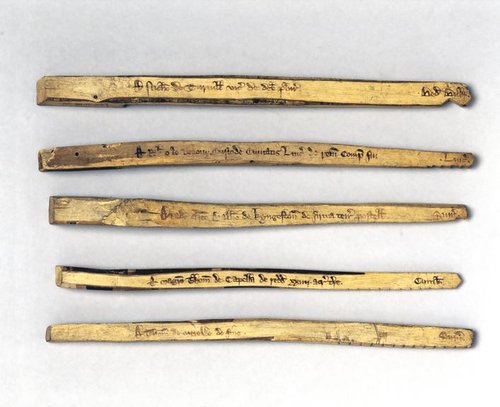The Money Illusion: Trust In Public And Private Money
Monday, 09 January 2023By Dr Michael Lloyd

There is much discussion about trust in money these days, especially, towards the end of 2022, in relation to crypto-currencies and to some stablecoins. Indeed, money, though intangible, is all about trust. This is true whether we are discussing private money or public money. However, beyond trust per se, the main issue is the extent of acceptance across wider society.
Public Money
Currently, in the absence of the issuance to the general public of central bank digital currencies (CBDCs), the only widely-used public money is cash, which is notes and coins. However, these are symbols of money. Money itself is not a physical object, it is not the cash tokens, rather is it is simply a system of recording account settlements denoted in a common unit of account. This is the case whether it is physical money (cash) or digital money.
(Einaudi 1937) indicates the historical evidence:
Books and pamphlets and statutes of the ninth to the eighteenth century are unintelligible if one does not bear in mind the distinction between money of account or imaginary money and effective or coined money. Usually, the money of account was called libra, livre, lira. Men kept accounts, drew instruments of debt, sold and bought goods and securities and property rights in imaginary money, which they never saw. Coins had strange names, they poured into each country from all parts of the world, were gold and silver and half silver dresses, were minted at home or by foreign princes. They made no difference to people who continue to talk and negotiate and keep accounts in libras.
Money, as an accounting ledger, is almost as old as human civilisation, though the historical forms which money tokens have taken have varied, gold and silver being examples. The role and allocation of money across the multifarious historical forms of social, cultural, economic, and political organisation has played a key role in influencing the structures and functioning of those organisational and societal forms.
All monetary tokens, bank notes for example, are a form of an I.O.U, expressing a social relation between creditor and debtor (Ingham 2004, Dodd 2014). This is why every bank note carries a legend indicating that the issuer promises to pay the bearer on demand the nominal value of the note.

It is broadly accepted, from historical and anthropological studies (Gayer 1937), that fiat money arose by the state issuing credit-tokens which were used by the state to purchase goods and services (including the military means to fight wars) and the state issued those credit-tokens in payment of taxes by citizens. In this manner the state’s public monetary sphere subsumed the existing private credit networks, providing a guaranteed monetary anchor.
This trust anchoring role of the state has been taken over within modern monetary jurisdictions by central banks, acting for the state. Money either issued by central banks directly or guaranteed by the central banks, is known as fiat currency, and is not backed by any physical commodity, such as gold or silver. This trust-anchor role of the central bank permits private money, in the form issued by strongly regulated commercial banks, to treated as money and used throughout a modern economy, as if it were public money. The vast majority of money (90%) used in modern economies is private money, issued digitally via commercial banks.
Before leaving the arena of public (fiat) money, there is one key aspect of its operation within monetary jurisdictions, to identify. This is the role that central banks play in in recording a full balance sheet of debits and credits and, crucially, providing a clearing system for netting balances so that final settlement can be achieved. The state, in the form of a central bank, guarantees the currency that it issues and spends and accepts as payment of taxes, fines, and fees (so-called fiat money), and acts as the nation’s book-keeper, providing settlement of debts and credits.
Kregel explains the essence of the national central bank mediated system in providing the full accounting (Kregel 2021):
If instead of individual accounts all participants in the system had accounts with a central bookkeeper who would keep track of the debits and credits in number units of account, the overall accounts would always balance, but there would still be individual imbalances that now could be automatically compensated by the central bookkeeper. If the bookkeeper is also the sovereign issuer of libra notes or mints gold libra coins they can arrange for the appropriate debts and credits in terms of notes or coins in the accounts of debtors and creditors. But since these are book entries, the notes and coins need not actually be transferred or even exist. In fact, they could be done away with (or buried in a vault or left under the sea ... in this social accounting money of account system, credits balances have value if they can be used to extinguish debts incurred in the production of goods and services.
The central bookkeeper is, of course, the central bank.
Private Money: Cryptocurrencies
We may now return to the problem of the apparent fragility of the trust placed in cryptocurrencies and stablecoins (the latter are cryptocurrencies nominally tied to the value of a fiat currency, almost always the US dollar). As the issuers of cryptocurrencies are, currently, effectively unregulated, unlike the strongly regulated commercial banks, there currencies are commodities, just like gold or silver. Though unlike commodities such as fine artworks, they are fungible.

Bitcoin affords a modern demonstration of the inherent paradox in all commodity-based money. It has a strictly controlled change in supply (via hash-mining) and a maximum limit on creation over time (21 million). However, it has failed as a means of payment because of the extreme variability in its price relative to other commodities, including gold, and in its exchange rate with national currencies. The difference between a “bitcoin system” and a “unit of account” settlement system, via fiat money, is that the former does not provide either a full balance sheet of debits and credits or, crucially, a clearing system for netting balances and achieving final settlement. Its distributed ledger system simply records credit transfers, to ensure proof of payment and security, entirely within its closed system. Bitcoin does not have a unit of account monetary system function. Trust is limited to the holders of bitcoin within the closed bitcoin system, as with other cryptocurrencies, whatever the system of becoming members of the private money communities.
It is this limitation of trust, compared with the universality of trust, within monetary jurisdictions, provided by central bank guaranteed fiat current systems, which is an unresolvable problem. This deficiency will constrain the use of cryptocurrencies as units of account and restricted use as mediums of exchange, for instance within large transnational corporation networks.
These constraints may not apply to the use of crypto-assets, such as Bitcoin, to be used as stores of value, the third function of money. However, this will only be possible if the extreme volatility in value of these commodities as assets is substantially reduced. Moreover, their use in this manner is likely only to be possible for sizeable corporations or very wealthy individuals.
Hence, though these forms of private money can and do exist, but they are unlikely to be widely accepted. In guaranteeing a fiat currency, the role of the central bank is crucial, as the financial institution that is a country’s monopoly banknote issuer, manages the domestic money supply; sets interest rates, and acts as the “lender of last resort” to commercial banks. The central bank also serves as a clearing house for the final settlement of payments – it is the banker’s bank. Many central banks also have supervisory and regulatory powers to ensure the solvency of commercial banks and the wider banking system.
Of course, it is possible, and probably likely, that via some regulatory framework applied to stablecoins, these may become central bank guaranteed private money channels, similar in status as commercial banks, though not able, as are commercial banks, to create credit money. Such regulation would enable stablecoin issuers to become “narrow banks”, lending solely against deposits, as for instance do building societies in the UK. This would also mean that stablecoin issuers and commercial banks could hold CBDCs, now being seriously considered by the vast majority of central banks.
The concept of a CBDC was proposed decades ago (Tobin 1987) and the term was used in the UK in 2016 (Bank of England 2016). However, interest in whether central banks should issue CBDCs has increased noticeably since 2016, and strongly since 2019, within the central banking fraternity and by several governments.
Future Developments
The monetary framework of an economy, described above, should be borne in mind when considering why governments and central banks are concerned about the dangers of the recent rapid acceleration in the proliferation of private digital money by unregulated private issuing companies. Central banks are concerned that this development may in future threaten the financial stability of the national and global monetary systems, based on fiat currencies. This potential has awakened central bank interest in issuing a retail digital currency, and in improving the efficacy of cross-border payment via extension of the existing wholesale digital currency system. Retail digital currencies – that could be issued directly to individual citizens, either to accompany, or potentially to replace, paper currencies and coinage, which is cash – are being considered by central banks. The decline of the use of cash in developed countries (and some developing countries) has been another motivating factor in considering the introduction of retail digital currencies.

There is little doubt now that central bank issuance of CBDCs will occur in the coming years. Initially, for use in cross-border payments and other financial transfers, such as securities These cross-border transfers will involve commercial banks and other significant, large financial institutions and non-financial organizations. It is likely that SWIFT will be involved here for retail payments.
More gradually, because of the need to gain significant acceptance from the general public, retail CBDCs will also be launched.
This does not mean the end of cryptocurrencies, though the market for such private networked money channels will probably be limited. Certainly, more limited than the initial crypto enthusiasts imagined. Stablecoins will probably survive, confirmed by regulation less onerous than central banks, but restricted to their being simply deposit-taking institutions, not able to create credit as do commercial banks.
Finally, though this article has stressed the dangers of a proliferation of crypto private money channel for financial and monetary system stability, and the importance of maintaining public fiat money channels, nationally and globally, the private monetary sector has shown its ability to innovate. The decentralized, distributed ledger technology (DLT) developed has indicated how it may be used in creating efficient accounting and financial transfer systems. There is further innovative use of DLT in supply chain operation and elsewhere to come. The public sector and central banks have benefitted from this innovation by the private sector.